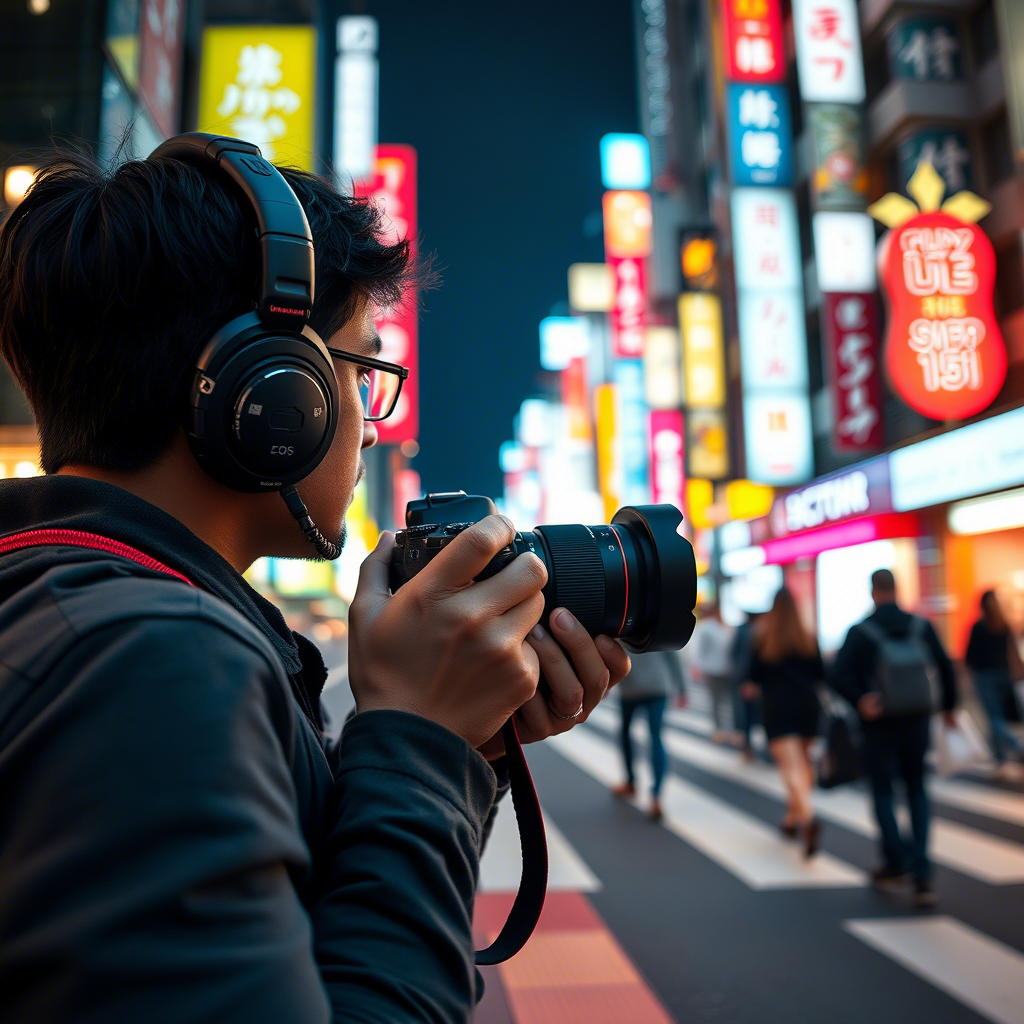Street photography at night brings a whole new atmosphere to your images—mysterious shadows, glowing city lights, and unscripted human moments. But without the right lens, those powerful scenes can quickly turn into blurry or underexposed shots. If you’ve ever struggled to capture sharp, vibrant photos after dark, you’re not alone.
In this guide, we’ll explore the best lens for street photography at night, with real-world recommendations, low-light tips, and lens options that truly perform when the sun goes down.
What Makes a Lens “Good” for Night Street Photography?
Not every lens is built for night work. Some just can’t gather enough light, or they focus too slow to keep up with real-time action. Here’s what really matters:
1. Wide Aperture (Low f-number)
Lenses with f/1.2, f/1.4, or f/1.8 can gather more light, helping you shoot handheld at night without turning your ISO all the way up.
Real example: Shooting with a 35mm f/1.4 on a rainy Tokyo street gave me sharp, moody images even under dim lanterns.
2. Fast, Reliable Autofocus
Nighttime means less contrast, and some lenses struggle to lock on. You want something that doesn’t hunt or miss moments.
3. Compact and Discreet Design
Bulky zooms make you stand out. Night street work is all about staying low-key. Prime lenses usually win here.
4. Focal Length That Matches Your Style
Do you like shooting wide and capturing the environment? Or are you more into tight, cinematic portraits of strangers?
Top 3 Lenses for Street Photography at Night
1. 35mm f/1.4 or f/1.8 – The Balanced King
Why it works:
This lens is wide enough to capture the environment + subject, but tight enough for detail. It closely matches the human eye’s perspective, making your photos feel immersive and real.
Pros:
- Wide aperture = low-light beast
- Perfect for storytelling compositions
- Small and portable
Used on: Sony FE 35mm f/1.4 GM, Canon RF 35mm f/1.8, Nikon Z 35mm f/1.8 S
“I once caught a man lighting a cigarette under a flickering diner sign — the 35mm gave me just enough depth without distortion.”
2. 50mm f/1.4 – For Classic Night Portraits
Why it works:
Want cinematic isolation and creamy background blur? The 50mm prime is your friend. It’s a little tighter, so you need some distance, but it gives gorgeous results.
Pros:
- Super bokeh at f/1.4
- Excellent for portraits or candid close-ups
- Light and affordable
Used on: Canon EF 50mm f/1.4, Sony FE 50mm f/1.4 GM, Nikon Z 50mm f/1.8
“At a jazz bar in Paris, I used a 50mm to shoot through the window. The result? A sharp silhouette surrounded by golden blur.”
3. 28mm or 24mm f/1.8 – For Wide City Scenes
Why it works:
If you love capturing the cityscape + subject, this is your lens. Wide, bright, and able to handle shadows and highlights like a pro.
Pros:
- Great for layering subjects + background
- Emphasises urban lights and structures
- Encourages dynamic compositions
Used on: Sony 24mm f/1.4 GM, Canon RF 28mm f/2.8, Fujifilm 23mm f/2 (APS-C)
“I crouched at a tram stop in Berlin and let a pedestrian walk into frame — this wide lens gave context and emotion.”
Also read:
Difference Between Prime and Zoom Lens – A Photographer’s Honest Breakdown
Best Lens for Portraits with Bokeh Effect – Expert Picks & Real-World Insights
Honourable Mentions (That Still Rock at Night)
- Sigma 56mm f/1.4 (APS-C) – Great reach with creamy bokeh
- Fujifilm 35mm f/1.4 – Beloved for its character and rendering
- Voigtländer 40mm f/1.2 (Manual) – For vintage lovers who enjoy full control
Tips for Shooting Night Street with These Lenses
- Use Manual or Shutter Priority Mode: Keep shutter speed above 1/125 to avoid blur.
- Embrace ISO: Don’t fear noise. Modern cameras handle ISO 3200+ pretty well.
- Look for Light Pools: Bus stops, shop windows, neon signs — let them be your studio.
- Use Zone Focus (especially with primes): Pre-focus and shoot when subjects walk into range.
- Shoot in RAW: Gives more flexibility in post to fix shadows or highlights.
Final Thoughts: Choose the Lens That Matches Your Night Style
So, which is the best lens for street photography at night?
Truth is — there’s no one answer. It depends on how you shoot, what you want to say, and what your city looks like after dark.
If you’re a quiet observer who likes intimate moments, the 50mm f/1.4 will feel like an old friend. If you love chaos, movement, and urban storytelling, a fast 35mm or wide 24mm will open up the night in ways you can’t imagine.
